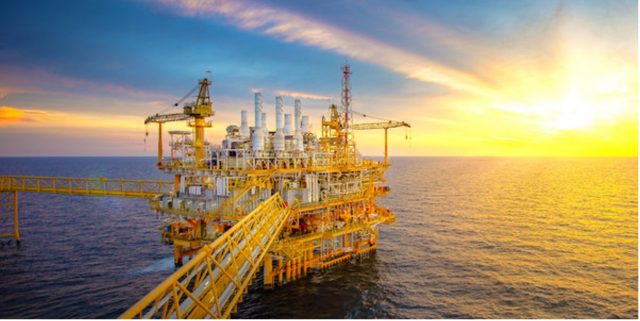Hellenic Petroleum LLC is a global supplier of diesel fuel, lubricants, and other petroleum products. With oil and gas prices seeming to be a fixture in the news of late, we asked Hellenic Petroleum to explain what they’re seeing in the global markets and what kind of demand is expected in coming years.
Recent reporting addressing the forecast for petroleum demand has reached a consensus: it will grow sharply over the next few years, then likely taper sharply.
But why do experts believe this trend is imminent? And what does this mean for the future of petroleum demand?
Hellenic Petroleum shares everything you need to know about this issue below.
OPEC Report and Opinion
The Organization of the Petroleum Exporting Countries, or OPEC, says that this forecasted increase in demand is due to economies recovering from the COVID-19 pandemic. A spokesperson for OPEC added that they advise countries around the globe to keep investing in oil production to avert a crunch, despite worldwide pressure to switch to renewable resources.
Although optimistic, this view from OPEC is not shared by the International Energy Agency. In a May report, the IEA advised against investors funding new oil projects, addressing the issue of reaching a global level of net-zero emissions.
However, according to Hellenic Petroleum this outlook did not dampen OPEC’s forecast for petroleum. According to OPEC’s Secretary General, Mohammad Barkindo, says that the demand for both oil and energy has already increased significantly during this year, after a massive decrease in 2020 due to the COVID-19 pandemic. The long-term forecast, he added, is for continued expansion.
In its 2021 World Oil Outlook, OPEC claimed that there will be an increase of 1.7 million barrels per day in 2023. This would bring the total to 101.6 million BPD. This adds to the previously predicted growth for both 2021 and 2022, officially pushing the oil demand back up to the 2019 pre-pandemic rate.
Petroleum Demand Longterm
Despite predictions of oil increase by 2023, The Organization of the Petroleum Exporting Countries has also lowered estimates for oil demand long-term, citing unforeseen changes in behavior from consumers that have been brought on mostly by the COVID-19 pandemic and electric car competition. While the initial increase in oil demand is still expected, OPEC notes that there will be a plateau in demand after the year 2035.
In the previous year’s report, OPEC stated that the global oil demand would surpass the rate of 2019 by 2022, not 2023. However, as mentioned previously, this demand is expected to reach 106.6 million BPD in 2030, which is down 600,000 BPD from the 2020 figure and 11 million BPD lower than what was predicted for 2030 in the 2007 OPEC report.
Assuming that there will be a faster take-up of existing technology, such demand could fall by the time we reach the 2030s. This is all according to a recent chart published by The Organization of the Petroleum Exporting Countries.
OPEC’s chart shows a more pronounced decrease in demand when compared to a similar chart they published the previous year. To add, an OPEC spokesperson stated that this is due to a few factors. First, the effect that the growing number of electric cars will have on future oil demands. Second, the fact that so many people began telecommuting or staying at home due to the COVID-19 pandemic.
Investing in Petroleum
Due to the lack of investment in pumping oil in countries like Russia, OPEC again emphasizes the importance of stepping up investments to avoid a potential future crunch. Hellenic Petroleum says one such example can be taken from last year when capital spending for upstream oil dropped by almost 30% to almost $240 billion because of the COVID-19 pandemic.
In fact, The Organization of the Petroleum Exporting Countries goes so far as to say that underinvesting in oil production is one of the greatest challenges that the oil industry is facing today. Additionally, they warn that if these increased investments arent made, that it could result in further volatility and an energy shortfall in the near future.
OPEC acknowledges the rising demand in oil that will be seen in the next few years but says that an increased supply from countries such as the United States and additional outside producers means that their output in the year 2026 could potentially be 34.1 million BPD. If this figure is accurate, it will end up being below the level in 2019.
Last year was the first time OPEC began to acknowledge that the oil demand will peak after years of predicting growth in the industry. The forecast for 2045 has been decreased to 108.2 million BPD, a loss of 900,000 BPD from last year.
Still optimistic about their prospects, The Organization of the Petroleum Exporting Countries is seeing its market share rise during later decades due to global competition beginning to wane. OPEC states that they expect shale, or tight oil output from the United States, to peak around the year 2030.
Conclusion
Throughout the next few years, Hellenic Petroleum LLC reports that the petroleum industry may see more-than-average volatility. Even with an increase in demand on the horizon, OPEC allies such as Russia are already unwinding supply cuts that were made during the previous year. And oil producers aren’t able to pump more oil due to a lack of investment.
However, OPEC Secretary General Mohammad Barkindo still believes in looking on the bright side. Barkindo claims that petroleum will remain the number one energy source, citing the persistent limitations of renewables.







